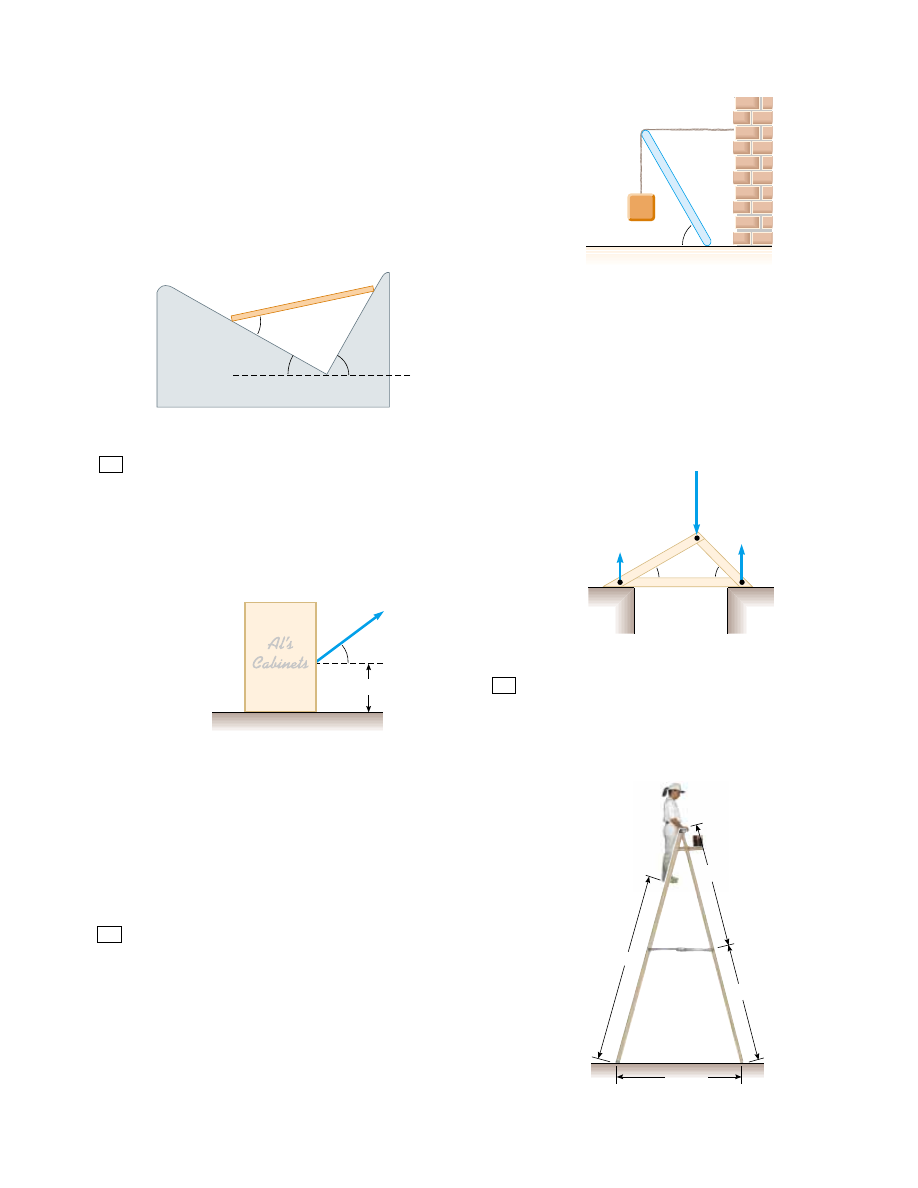Physics For Scientists And Engineers 6E - part 97

Problems
385
54.
Consider the rectangular cabinet of Problem 53, but with
a force F applied horizontally at the upper edge. (a) What
is the minimum force required to start to tip the cabinet?
(b) What is the minimum coefficient of static friction re-
quired for the cabinet not to slide with the application of a
force of this magnitude? (c) Find the magnitude and di-
rection of the minimum force required to tip the cabinet
if the point of application can be chosen anywhere on the
cabinet.
A uniform beam of mass m is inclined at an angle )
to the horizontal. Its upper end produces a ninety-
degree bend in a very rough rope tied to a wall, and
its lower end rests on a rough floor (Fig. P12.55). (a) If
the coefficient of static friction between beam and
floor is +
s
, determine an expression for the maximum
mass M that can be suspended from the top before the
beam slips. (b) Determine the magnitude of the reaction
force at the floor and the magnitude of the force
exerted by the beam on the rope at P in terms of m, M,
and +
s
.
55.
56.
Figure P12.56 shows a truss that supports a downward force
of 1 000 N applied at the point B. The truss has negligible
weight. The piers at A and C are smooth. (a) Apply the con-
ditions of equilibrium to prove that n
A
!
366 N and
n
C
!
634 N. (b) Show that, because forces act on the light
truss only at the hinge joints, each bar of the truss must ex-
ert on each hinge pin only a force along the length of that
bar—a force of tension or compression. (c) Find the force
of tension or of compression in each of the three bars.
A stepladder of negligible weight is constructed as shown
in Figure P12.57. A painter of mass 70.0 kg stands on the
ladder 3.00 m from the bottom. Assuming the floor is fric-
tionless, find (a) the tension in the horizontal bar connect-
ing the two halves of the ladder, (b) the normal forces at A
57.
Figure P12.55
Figure P12.56
1000 N
B
C
A
10.0
m
n
C
n
A
30.0
° 45.0°
Figure P12.57
2.00 m
2.00 m
3.00 m
A
2.00 m
B
C
Figure P12.52
point two thirds of the way up the spine, maintains the po-
sition of the back. The angle between the spine and this
muscle is 12.0°. Find the tension in the back muscle and
the compressional force in the spine.
52.
A uniform rod of weight F
g
and length L is supported at its
ends by a frictionless trough as shown in Figure P12.52.
(a) Show that the center of gravity of the rod must be
vertically over point O when the rod is in equilibrium.
(b) Determine the equilibrium value of the angle ).
O
60.0
°
30.0
°
θ
A force acts on a rectangular cabinet weighing 400 N, as
in Figure P12.53. (a) If the cabinet slides with constant
speed when F ! 200 N and h ! 0.400 m, find the coeffi-
cient of kinetic friction and the position of the resultant
normal force. (b) If F ! 300 N, find the value of h for
which the cabinet just begins to tip.
53.
Figure P12.53 Problems 53 and 54.
h
37.0
°
w = 60.0 cm
!
= 100 cm
F
P
m
θ
M